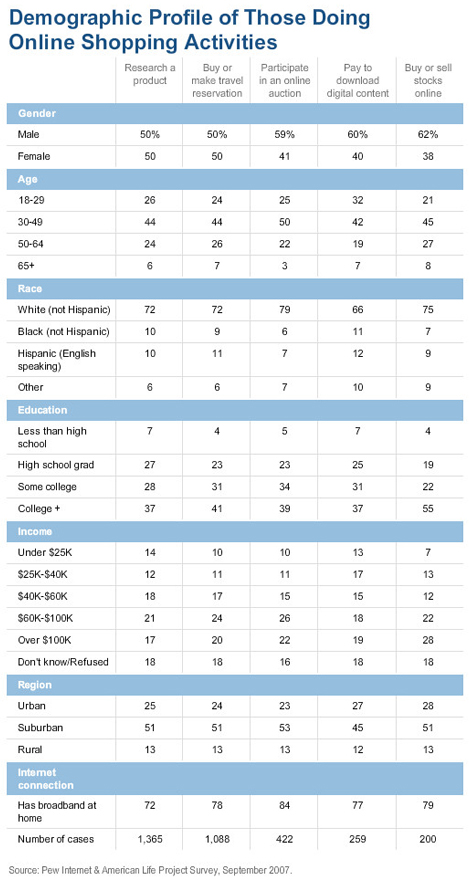This following table provides demographic profiles on online users who have done different activities online pertaining to buying or researching products using the internet.

The model used to estimate changes in online shopping levels
To estimate the changes in levels of online shopping, logistical regression analysis was used to model the likelihood of purchasing something online as a function of a number of different variables. The dependent variable was whether or not people have ever bought online a product such as a book, toy, music, or clothing. Some 66% of online users in this survey answered “yes” to that question. The independent variables in the model fall into several categories:
- Demographic & socio-economic: Gender, race, age, parental status, educational attainment, region of residence (urban, rural, or suburban place), and income.
- General attitudes and behaviors toward shopping: Whether people feel overwhelmed by the choice of consumer products, how often they shop, and whether they do research before buying products.
- Attitudes toward online shopping: How strongly internet users agree (on four point scales) with propositions on online shopping: the internet us the best place to finding hard-to-find items, online shopping is complicated, online shopping is convenient, dislike giving credit or personal information out online, the internet is the best place to find bargains, online shopping saves time, prefer to see things before buying them.
- Technology use: Whether they have broadband at home, use a cell phone only (and thus don’t have a landline phone at home), and whether they ever use the internet someplace other than home or work.
The model permits analysis of the change in the probability that a user has bought something online, given a change in the variable in question (e.g., the respondent’s assessment of online buying as a time-saver) while holding all other variables constant.




